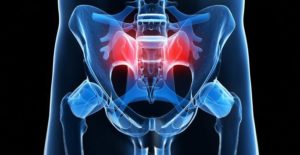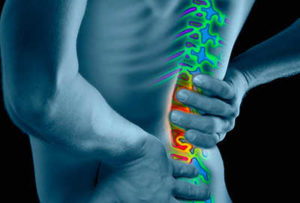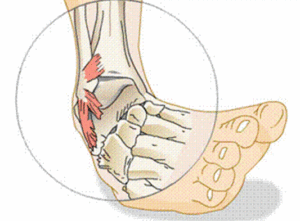 The sacroiliac (SI) joints are located near the bottom of the spine; they connect the sacrum with the iliac crest (pelvis) on either side. These joints have limited mobility, they help carry the weight of an individual’s upper body when standing, and aid in movements such as walking. According to research by Szadek et al (2009) and other previous studies conducted, 15-30% of all patients who come in for professional help (complaining specifically of lower back pain) suffer from SI joint dysfunction.
The sacroiliac (SI) joints are located near the bottom of the spine; they connect the sacrum with the iliac crest (pelvis) on either side. These joints have limited mobility, they help carry the weight of an individual’s upper body when standing, and aid in movements such as walking. According to research by Szadek et al (2009) and other previous studies conducted, 15-30% of all patients who come in for professional help (complaining specifically of lower back pain) suffer from SI joint dysfunction.
There are various causes for SI joint dysfunction including osteoarthritis, pregnancy, and conditions which alter the standard walking pattern of an individual can result in increased stress on the SI joint. If patients already have a lower back disorder this could also increase the risk of SI joint dysfunction as the body tries to adjust posture to minimize pain and therefore possibly place more stress on the joint. Two main overarching consequences from the various possible causes are said to trigger the pain; increased or decreased movement of the joint.
The most common symptoms of SI joint dysfunction include back pain, and possible pain along your buttocks, groin or upper back leg; the pain itself very rarely spreads down past your knee. This pain is generally felt when standing up, walking or even lying on one’s side for a prolonged period of time. Patient’s tend to feel relief when lying on their back. These symptoms are very general and can also be attributed to other mechanical issues in your back or body, therefore, patients who wish for an accurate diagnosis come in for further professional tests.
Professional diagnosis of SI joint dysfunction may include at its most preliminary stages X-rays to grasp the positioning of the bones in the area of pain and, as Arnbak et al (2016) suggest in their research, intra-articular injections with local anaesthetics, and a series of mobility tests to provoke the pain and try to isolate the cause and origin.
In a lot of cases, once the diagnosis has been made and the cause identified (if possible), treatment includes rest; individuals are advised to stop the activity which causes the pain. This is not always a realistic treatment option; as a pregnant individual cannot suddenly decide to stop being pregnant. Other treatment options include pain killers, an injection of cortisone to try and limit inflammation, and physical therapy. Physical therapy covers a range of different possible treatments including massage, stretching or stabilizing exercises to strengthen the muscles and ligaments surrounding the joint, correction of bad posture and even possibly advised exercises such as yoga to increase joint stability.
SI joint dysfunction cannot be self-diagnosed accurately, as the symptoms identified can also be attributed to other underlying causes. If you are experiencing severe pain refer to an expert for professional treatment and support (go directly to a physiotherapist if possible). Although treatment is often traditional and seemingly simple, it is targeted to your specific problem and therefore more effective than any home remedy internet articles sometimes attempt to suggest.
References
Arnbak, B., Jurik, A., Schiottz-Christensen, B., Van Der Wurff, P. and Jensen, T. (2016). Electronic resources login page – University of Groningen Library. [online] Tandfonline.com.proxy-ub.rug.nl. Available at: http://www.tandfonline.com.proxy-ub.rug.nl/doi/full/10.1080/03009742.2016.1184308?scroll=top&needAccess=true [Accessed 29 Apr. 2020].
Catherine Burt Driver, M. (2017). Sacroiliac Joint Dysfunction (SI Joint Pain) Symptoms, Treatment, Causes – What is the treatment for sacroiliac joint dysfunction? – MedicineNet. [online] MedicineNet. Available at: http://www.medicinenet.com/sacroiliac_joint_pain/page7.htm [Accessed 29 Apr. 2020].
Fortin, J. (1993). Sacroiliac Joint Dysfunction. Journal of Back and Musculoskeletal Rehabilitation, 3(3), pp.31-43.
Steven G. Yeomans, D. (2017). Treatment Options for Sacroiliac Joint Dysfunction. [online] Spine-health. Available at: http://www.spine-health.com/conditions/sacroiliac-joint-dysfunction/treatment-options-sacroiliac-joint-dysfunction [Accessed 29 Apr. 2020].
Szadek, K., van der Wurff, P., van Tulder, M., Zuurmond, W. and Perez, R. (2009). Diagnostic Validity of Criteria for Sacroiliac Joint Pain: A Systematic Review. The Journal of Pain, 10(4), pp.354-368.




